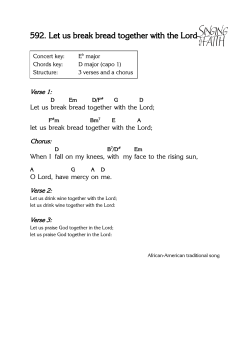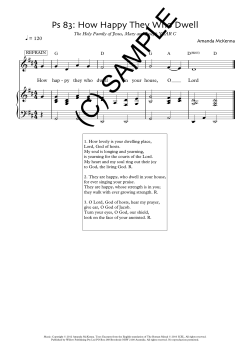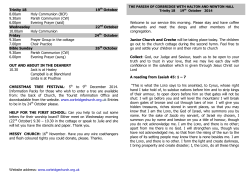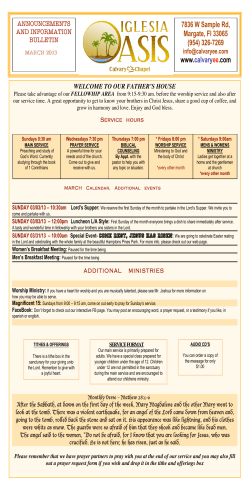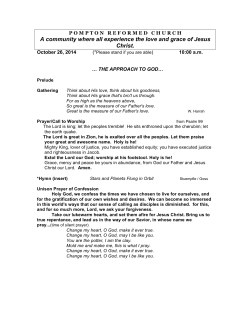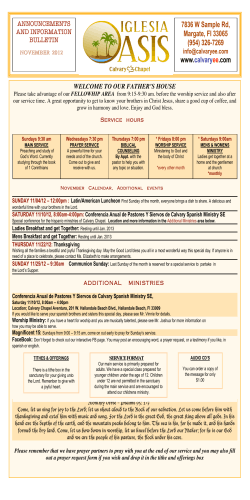
YAKSHAGĀNĀS STUDY OF LITERARY AND MUSICAL FORMS IN TELUGU to Shāhāji’s
STUDY OF LITERARY AND MUSICAL FORMS IN TELUGU YAKSHAGĀNĀS (With special reference to Shāhāji’s Śankara pallaki sevā prabandham &Viśnu Pallaki Seva Prabandham) Sailaja Sistla Research Scholar Music Academy Research Centre Yakshagānā is a theatre form of literature and music. Initially a literary form, Yakshagānā was later transformed into a theatre form imbibed with rich music, literature, dance and drāma. Yakshagānās have been popular in Āndhra and Karnātakā. Telugu Yakshagānā has been a repository of innate literature, music, dance and culture. In the Āndhra Literature the mention of Yakshagānā appears for the first time in Srinādha’s Bhimeśwara Purāna written in 1430 A.D. Among the available Yakshagānās, Sugriva Vijayam of Kandakūri Rudra Kavi is considered to be the first Yakshagānā(Āndhra Yakshagānā Vāngmaya Caritra by Dr.S.V.Joga Rao - pg 110). Generally Yakshagānās are performed from dusk to dawn. The opening and the closing rāgās in the Yakshagānās are to the most extent same. The rāgās which we come across in the Yakshagānās are Nāta, Ānandabhairavi, Kāmbhoji, Bhairavi, Śankarābharam, Pantuvarāli, Yadukulakāmbhōji, Surati, Sourāśtra, Madhyamāvati, Nādanāmakriya, Ghantā, Todi, Asāveri, Ārabhi, Saindhavi, Kedāragaula, Mohana, Āhiri, Sāveri, Kuranji, Punnāgavarāli, Mukhāri, Begada, Kalyāni, Pharaju, Todi ,Kāpi, Goulipantu, Huseni, Ritigaula, Yamunakalyāni, Varāli, Bilahari, Nāgagāndhāri, Devagāndhāri, Nilāmbari, Sahana. The tālās generally employed in the Yakshagānās are Ādi, Rupaka, Chāpu, Jhampa, Triputa and very rarely Ata (the daru Kanugonavē muddugomma kanugonavē and the daru Indukemisetummamma upāyamemi from Viśnu Pallaki Seva Prabandham), but we do not find the use of any complicated tālās. The Yakashagānās are classified into three kinds: Sravya, Drusya and Sravya-Drusya (Āndhra Yakshagānā Vangamaya Caritra by Joga Rao S.V.Dr. – pp209-211) *Sravya Yakshagānās: The Yakshagānās written for reading and listening. Ex: Prahlāda Vijayam of Nischinta Embārayya, Nowkā Charitram of Tyāgarāja *Drusya Yakshagānās :Those which can be staged. Ex: Prahlāda Charitram of Melattur Venkatarāma Sāstry, GollaKalāpam of Bhārati Rāmarāju. *Sravya as well as Drusya Yakshagānās are those that are fit for both. Ex: Srinivāsa Kavi Pārijatamu, Bhārati Rāmarāju Gollakalāpamu. The Yakshagānās reached their zenith and glory during the period of Tanjāvur Nāyaks(16331673). The noticeable change about the Yakshagānās during the period of the Nāyak is the culmination of the triple dimensions- music, dance and literature. Shāhāji (1684-1712) the Marāthā ruler of Tanjāvur has taken Yakshagānās to greater heights. He was a great scholar, linguist, musician, composer, musicologist and a great patron of arts. Shāhāji was a great poet in Telugu, Sanskrit and Marathi and has composed almost 20 dramas in telugu, padams, svara jathis and Tillanas. Shāhāji mentions four works of his as Prabandhas, which are Gouri Pallaki Seva Prabandham, Viśnu Pallaki Seva Prabandham, Pancharatna Prabandham Tyāga Vinoda Chitra Prabandham. Shāhāji introduced a new style of Prabandha composition which had both musical and dramatic significance. PRABANDHA: Prabandha is a literary piece of work. Etymologically a Prabandha is one which is bound by certain rules, regarding the structure, theme etc... “Prabadhyate iti Prabandah”. “Prakruśtam bandham prabandham”, which means, significantly structured by nature. At this juncture, it becomes necessary to describe and differentiate the literary prabandha and the musical Prabandha. In literature, Prabandha is a poetic work with the astādasha varnanās i.e. the description of eighteen factors according to Udbhata and many other lākshanikās, which include a city or a town, sea, mountain, season, sunrise sunset, separation, about the king, a battle which can be seen as in the following from the dvitiyasvanamu(166) of kāvyālamkāra Samgraham (Narasabhōpāliyam) by Rāmarāja Bhūshana: “Purasindhunagartvinasasi Sarasiivanamadhurati prasangarahamul Parinayatasayodayanaya Virachnayātrājidoutavibhuvarnamul” In the musical aspect the Prabandha denotes a composition with specific characteristics. A Prabandha with reference to music has been defined as a musical composition which is governed by rules regarding rāgā, tālā, metre, vṛtta and anga. In Chaturdandi Prakāsika it is mentioned about prabandha in music as that which is bound by six angās and four dhātus. “Ucyate shadbhirangaisca chaturbhidhaturbhischayah I Nibaddah swarasandarbhastasminneva hibhūriśa I Prabanda iti lokānām vyavahāro nirīkśyate” II “śadangāniitichedbrumaha swaraschabirudam padam I Tenakah pātatālau cetyetānyangāniśatpunah II The six angās or elements of the musical Prabandhas are swara, birudu, pada, tenaka, pāta and tāla. The four dhātus are Udgrāha, Melāpaka, Dhruva and Abhoga. The literary forms used in the Yakshagānās are Sisa padyas, kanda padyas, Dvipadas, Utpalamāla, Champakamāla, Ātaveladi, Tetagīti, Mattebham, chōrnika, sārdulam, gītapadyas, Mattakokila Vṛttam, Layagrāhi, Todaka Vṛttam. Examples for a few literary terms mentioned above are given below: Kanda Padyam Kanda Padyam 1 from Śankara Pallaki Seva Prabandham by Shāhāji : “Caligaṭupaṭi nādhuni I Valapunademmanna nindu vacitimidigo II Koluvuna velayudununḍeḍi I Kaluvaladoratālpu celuvuganugonavamma II Champakamāla Champakamāla padyam from Śankara Pallaki Seva Prabandham of Shāhāji: Kaṭakaṭa prodduvoye nuḍukāntasikahāmaṇi devakāminī / Natanamujūchi vennuni manambalaran vaciyincucunna va // ḍatu taḍavāyenancu manamam dacalātmaja yalga niti sam / Kaṭamuna kēmisēyudamu kanjanibhānana vinnavimpavē // The musical forms that are seen in the Yakshagānās are Daruvus, Aśtakam, Dhavalam, Yelalu, Erukasāni pāta, Suvvi paata, Lāli pāta, Ragada, chūrnika. Examples for a few musical forms mentioned above are given below: Chūrnika Chūrnika from Śankara Pallaki Seva Prabandham: Jaya jaya sakala gēvana vandita pādāravinda I Jaya jaya kanakadharādharakōdanḍa I Jaya jaya danujāntaka kānḍa I Jaya jaya ganḍasthala niganniganmaṇikunḍalikunḍala sadguṇamanḍala I Jaya jaya sāhadharādhisa chittambuja patanga I Jaya jaya dhavalānga I Jaya jaya nijabhakta bhayanāśa I Jaya jaya Tyagesa Namaste Namaste namaha II Ashtakam Example of Ashtakam from Śankara Pallaki Seva Prabandham: 1. 2. 3. 4. 5. 6. 7. 8. Bhakitō devādidevuni pādapadmamu lottumī Metta mettaga shankaruni nemmīna gandhamu mettumī Sattugaa bangāru sommulu chandradharunaku bettumī Atipōla saramulanu haruni siramuna juṭumī Celimito baramesu centanu jēri sēvalu cheyumī Solapunanu haru shranti tīraga surati cekoni visarumī Velayu Sahavibhundu cesina vinutipadamulu padumī Alayakanu devādidevuni kānandamu rati gōdumī. The musical compositions in the Yakshagānās are set to various tālā.s. The ragada and the daru-s, which are metrical forms with specific prosodic or composed in a particular chandas, have an inherent tālā system which suggests the gati and laya of the composition. The meters are mostly suitable to the inherent bhāva reflected appropriately by the rāga and tālā. Daru is a musical form which brings out the musical expression with the gadya-padya (prose – potery or lyrical) sāhitya components in the compositions. It is believed that daru is a variation of Dhruva as mentioned in the Nātyasāstra of Bharata. These are of 5 kinds: Prāvesiki tu prathamādvitiyaakshepikee smrita Prāsadiki tritīyā cha chaturthee cha antarā dhruvā Naishkramikī cha vijneyā Panchamī cha dhruva budhaih The daru-s used in the Yakshagānās equivalent to the Dhruvas of Bharata are Pātra pravesa daru, Varnana daru, Swagata daru, Samvāda daru. Apart from these there are Kolāta daru, Kandārtha daru, Sīsārtha daru etc... The daru-s helps in the establishment of the emotional continuity. The choice of the rāgās is made to enhance the personality of the character or the situation in the Yakshagānā. For example the “Pātrapravesa daru of Hiranyakasipu from Prahlāda Charitram of Melattur Venkatarāma Sāstry is set to Sāveri suitable for the veera rasa”. The Ragada is a metrical form with a suggested musical form used in the Yakshagānās. Ragadas are based on the Jhampa, Triputa and Eka tālā.s. There are nine varieties of ragadas and have a rhythmic pattern. When a daru is mentioned as a form of ragada it is understood that the nadai of the daru is in relation with a specific rhythmic structure. Here the words like gati, laya are interwoven terms and can be mentioned as synonyms of the tāla. The mention of Ragadas like Mayuragati ragada, vrishabha gati ragada mention the description about the laya, in the songs and refelect the movement of a peacock and bull respectively. The prosodic pattern of his compositions conforms to the tāla in which it is composed. An example of Vrishabhagati ragada from the Viśnu Pallaki Seva Prabadham is U I U I I Sri ramādhava – U I UI I UI U U I U IUI I mādhavaasara – siiruhāpta - sudhāmsulochana Dāruṇa dvipabhitimocana-dāneswara sārthi yāchana Here the pangs of separation of Lakshmi are described to Viśnu in the Vrishabhagati ragada in the Trisra Triputa tālā. It is said that the important ragadas are set to various denominations of Triputa tālā. SHĀHĀJI ’S (1684-1710) YAKSHAGĀNA’S: ŚANKARA PALLAKI PRABANDHAM SEVA PRABANDHAM AND VIŚNU PALLKAI SEVA THE STORY OF ŚANKARA PALLAKI SEVA PRABANDHAM AND VIŚNU PALLAKI SEVA PRABANDHAM: The theme is parallel in both the Pallaki Seva Prabandhams. In Śankara Pallaki Seva Prabandham Pārvathi sends her sakhis as messengers to her Lord as she is bearing the pangs of separation from her lord. The sakhis discussion of revealing the situation of Pārvathi to lord Shiva who was engrossed in the talk with the other gods in his court is well described. A suggestion to approach through Ganga, Serpent, Moon, and Deer are well described which were the means to successfully complete the delicate task. The sakhis themselves approach the lord and explain the situation of Pārvathi, the Lord is moved and orders for the Palanquin. The description of the Palanquin is richly described. The rasābhāva is well brought out through the daru describing the palanquin and the movement of the palanquin bearers. The play concludes with mangalam in Pantuvarāli rāga, which is followed by a Dvipada. The Viśnu Pallaki Seva Prabandham also follows the same theme. Here the pangs of separation of Lakshmi are conveyed to Lord Viśnu through the companions of Lakshmi. The court where Lord Viśnu is busy with the other gods is well described. Here the companions think of approaching through Sage Nārada, Manmatha. Finally the companions themselves approach the lord and describe the situation of Lakshmi to their Lord. Here also the beauty of the palanquin is richly described. This play ends with a shobhanam in praise of lord and followed by the mangalam in the form of a Dvipada. Shankara Pallaki Seva Prabandham and Viśnu Pallkai Seva Prabandham are the two Yakshagānās chosen for the presentation. The literary and musical characteristics in these two Yakshagānās are discussed in this paper. The point to be observed is though the two Pallaki Seva Prabandhams are by the same composer, the rāgās and the tālā.s are mentioned in the Śankara Pallaki Seva Prabandham whereas in Viśnu Pallaki Seva Prabandham the rāgās and tālā.s are mentioned only for few and the rest are mentioned to be sung with reference to the popular compositions, giving the musicians a wider scope to sing in the rāgās of their choice and their creativity. This gives a scope even for the Abhinaya part in the field of dance. The literature, music, prosody, and the metre in both the prabandas are very rich. The language used is also simple enough to be understood. The music of Śankara Pallaki Seva Prabandham is popular, but that of Viśnu Pallaki Seva Prabandham has not become much popular. Shāhāji has given more importance to the vrittas and daru-s in his Prabandās. Forms Daruvus Kanda Padyas Champakamāla Utpalamāla Gitam Sisa padyas Dvipadas Chūrnika Śankara Pallaki Prabandham 22 6 3 2 2 1 3 1 Seva Viśnu Pallaki Prabandham 38 12 3 2 2 1 5 1 Seva Apart from these we can see Kaivarāmu(2), Todakavrittam(2), Vrishabhagati(1), Mayuragati(1), Layagrāhi(1), Ashtakam(1), Dhavalam(1) in Viśnu Pallaki Seva Prabandham. The vachanās are very less in number. The rāgās used by Shāhāji are all rakti rāgās. These have been composed in such a way that they are suitable even for performance. Though categorized as Yakshagānās, it is suitable for dance as well because the bhāva of the dancer and the graceful movements can be well performed. The rāgās used in the Śankara Pallaki Seva Prabandham are Sankarābharanam, Saveri, Mohana, Begada, Madhyamāvati, Sourāshtra, Bhairavi, Nādanāmakriya, Kuranji, Ghantā, Punnagavarāli, Saindhavi, Pantuvarāli. The tālas used in this Yakshagānā are Triputa, Misra Chāpu, Rupaka, Adi and Jhampa. The rāgās used in Viśnu Pallaki Seva Prabandham are Nāta, Arabhi, Pantuvarāli, Ahiri, Mukhāri, Desākshi, Malahari, Devagāndhāri and Bhairavi. The tālas used in this Yakshagānā are Jhampa, Chāpu, Adi and Ata. The usage of the varied rāgās can be seen in both the Yakshagānās. The usages of the sapta tālas in both the Yakshagānās show us the command and inclination towards music. The richness of music can be seen with the employment of the rāgās. Study and analysis of selected literary forms in the Śankara Pallaki Seva Prabandham: In the Śankara Pallaki Seva Prabandham Shāhāji mentions in the beginning that he is composing the Prabandham for the pallaki seva of Gauri and Shankar, the parents of Karimukha and guha. In the beginning Dvipada Shāhāji mentions that he belongs to the surya vamsa(Bhosala) . A Dvipada gives the gist of the story. Here in the Dvipada the name of the Yakshagānā is also mentioned. Unable to bear the pangs of separation, Pārvathi requests her sakhis to go and convey her situation and bring Lord Shiva to her abode. The sakhis go to Lord Shiva, but find him seated in the durbar much engrossed in his talk with Lord Viśnu and the other Gods. Later in the story through the champakamāla “Kaṭakaṭaprodduvoye” the sakhis of Parvathi describe that is getting late, ie the time must be the dusk/evening time, and they are frightened that Pārvathi might be angry as she is waiting for her Lord to come back to her abode. While the sakhis of Pārvathi think of the mean s to convey th e state of Pārvathi to Lord Shiva through Ganga, the deer, the moon and the serpent, the description of the moon in the Champakamāla verse is given as “Vīdhivintaka sikhankaratnama”. Here he meticulously uses the word to convey the importance of the moon. Here the repetition of the letter “ma”, the alliteration shows his poetic excellence. These are few examples. Richness of the poetic excellence, prosody is seen in all the literary forms. In the Dvipada “O! Dinamandara” the sakhis approach Lord Shiva directly and address Shiva to go the abode of Pāvathi as she is unable to bear the separation of him. Here they address Lord Shiva as “Yonagāgārā” ie Kailasavasa, one who resides in the Kailasa. The usages of such words show his richness in the telugu language and vocabulary. The same bhava is conveyed through the daru “Elukovayya”. Study and analysis of selected musical forms in the Śankara Pallaki Seva Prabandham: Literature and music have equal importance in the Yakshagānās. Music gives an impact on the bhāva and expression of the situation depending on the selection of the rāgās for the existing situation. Here Shāhāji has very well chosen the rāgās as per the circumstances. There are 22 daru-s in this particular Yakshagānā. Among these we can find the use of the rāgās Shankarābharanam, Sāveri and Pantuvarāli intermittently in the daru-s but with a different mode of expression without deviating from the lakshanas of the raga. The usage of rare rāgās like Ghantā and Saindhavi with the rich bhava and keeping intact the rāga lakshana shows his command in the field of music too apart from the literature. The musical forms apart from daru-s which we come across in this Yakshagānā are lāli pāta which is in rāga madhyamāvati, and an ashtakam, choornika, dhavalam and shobhanam. The chūrnika has no pādas and is arranged in prose order. Generally it is sung in the Devagāndhāri or Arabhi rāga. Chūrnika has no difficult words but comprises of a mixture of easy and compound words. In the Chūrnika “Jaya Jaya sakala gīvana vandita” we come across compound words like “kanakadharādharakodanḍa”,ganḍasthalaniganniganmanikunḍala” which mean a person who has meru mountain as his bow and the cheeks respectively. Here he praises Lord Shiva. We come across three daru-s in raga Śankarabharanam i.e the first daru “Koluvaiyunnade” set to Chapu taala, and the 4th daru “Idi vinarade” set to Triputa tālā. and the 9th daru “Singarampu Pallaki” set to Mishra Chapu tālā.. If looked into the notation, all three daru-s have Shadja as their Graha swara. In the first daru “Koluvaiyunnade” the description of the court is given where Lord Shiva is in a meeting with all the gods, Viśnu, Brahma etc… here the sakhis think not to disturb him and instead convey the situation through the ornaments. In this daru we see the repetition of the phrase “G,ma ga ri ri ga R S”in the second avarta of the Pallavi, Anupallavi and Charanam in the second speed. Thephrase “ma,ga,ri,ga ma ga ri ma ga ri”can been see along with different phrases in the second kala in the last avarta of the pallavi, anupallavi and charanam. In this daru most of the phrases are given in the second kala. The janta prayogas like “pa pa ma ma G; sa sa ri ri G; sa ri ri sa S;” are used frequently. These phrases enhance the beauty of the raga. The description of the palanquin is very well described in the daru “Singaarapu Pallaki” in raga Śankarabharana set to Misrachapu tālā. The decoration of Pallaki is described with the usage of words like “jīnipannagamu(the outer cover of the Pallaki) ,magarala nigarala manchi chattamulugala(precious gems), kuruvindamula keelu konugobbalu(Ruby) nalidindulanu(verygentle and soft), being draped with satin and precious stones etc… which gives a live picture of the palanquin. The musical beauty is also enriched by using the phrases like “ma ga ga ri ri sa sa ṇi; ga ma pa ga ma ga ma ri; pa S sa ṇi D pa ma”etc… in this daru also we find both the madhyama kala sangatis and the second kala sangatis composed with great efficiency. In the daru “Idi vinarāde” in the raga Śankarabharanam set to Triputa tālā. it is the description of Ganga, where the sakhis of Pārvati describe Ganga. Here in this daru the pallavi and anupallavi are same but sung with different mode of expression and meaning. Here both Pallavi and Anupallavi have Shadja as their Graha swara but in the Anupallavi the composition is said to start with the tara sthayi Shadja. Here the repetition of the phrase “pa pa ma G ga ri S” in the second kālā is seen in the second avartha of both Pallavi and Anupallavi. The pallavi, anupallavi and charanam end with words “ta lu”, “ta lu”, “ate”, and “ta lu” respectively and the phrase used is “da N S” in the mandra sthayhi. In the daru “kadalimpakuroyi” in the raga Nādanāmakriya set to Mishra Chāpu tāla, as per the text and if seen in the notation it is mentioned as set in Adi tāla(dvi kala). Shāhāji mentions the gait of the Pallaki and the bearers of the Pallaki. Here the sakhis of Parvati tell the bearers to very carefully carry the Palanquin as the Lord, who has destroyed the three worlds of the rākshasās, and the Lord who has the whole Universe in his stomach is seated in the Pallaki and the slightest turmoil may shake the universe. In the daru “Elukovayya” in the rāga Souraśtra set to Miśra Chapu tālā we can see the Antyaprāsa alankāra in the charanas. The first line of the three charanas end with the word “chaala” and the second line of the charanās end with the word “bāla”. In the daru “Polati intainaa” in raga Pantuvarali set to Ādi tāla(dvi kala) the lack of faith on the moon is described where moon is mentioned as the uncle of Manmatha and the one who increases the prangs of separation. Musically if seen the phrases like “pa ma ga ma ga ri sa ṇi; ni da pa ma ga ma ga ri sa ni; P pa ma ga ma ga ri sa ni etc…” are used which enhance the beauty of the raga. These phrases have been used frequently in thi daru. If noticed the notation of the Pallavi and the Charana are almost similar except for the phrases “G G R R” in the pallavi which is modified in the charana with the phrase “ga ma G R R”. The beauty of the rāga has been explicitily shown through this daru. In the daru “Pādāvadhānamu” in raga Pantuvarāli set to Ādi tāla, the sakhis of Pārvati describe the state of gods and sages looking forward to Lord Shiva’s presence. Here the words “heccharika paraku devādideva” interpret the glory by gods like Agni, Indra Kubera from which an idea of the customs in the court of the kings, temple festivals and the worship of Gods has been well described and put forth. Here if observed the daru has no Pallavi or Anupallavi, it has six charanas and the daru takes panchamam as its ettugada swaram. In the daru “Entavedukalāye” in the rāga Pantuvarāli set to Jhampa tāla, there is a description of the richly decorated bed chamber of Pārvati, which is exceedingly beautiful and gives a suitable welcome to Lord Shiva. The decoration of the surroundings and the whole place has been well described. The composer must have had an intention of bringing into light the culture and heritage practiced during his times. Musically if noticed the ettugada swara is panchamam. The use of phrase “pa ma pa ma ga ri sa ri ga ma” in the second kālā has been repeated at the end of the pallavi, anupallavi and the charanam. The waiting of Pārvati for Lord Shiva is well described in the daru “Idigo Koluvaiyunnadi” in the rāga Kuranji set to Ādi tāla. Pārvati getting decked for Lord Shiva has been described with rich vocabulary in this daru. Observing the literary description it can be assumed that the kingdom of Shāhāji flourished with prosperity and richness. Musically if looked into, this daru has taken Shadjamam as its starting note. The notation when studied was found that the notation of pallavi and Charana seem to be same to some extent. The Pallavi goes like this- Idigo koluvaiyunnadi Himagirikumari, has the notation as: ;sa ri G M- ma gag a ri sa ni N/S;;-ga ma/ P pa ma- ga ma ga ri II Sa ni- sa ri G maPma-ma gag a ri sa ni N/S ; ; - ga ma/ P pa ma-ga ma ga ri II Sa ni ……………………………………………………………. The charanam is “jalakamulāḍi hecaina jarigachīragaṭi …………” which also has the same notation as said above in Pallavi. Here the nyāsa swara is “ni”. The daru “Bhaktito devādi devuni” is in the raga Punnāgavarāli set to Ādi tālā. This is an Ashtakam which has eight lines and each line is sung in the same tune. Here the antyaprāsa a rhetoric beauty is well described. The lines end with the letter “ma”. In the raga Punnāgavarāli the beauty of the rāgā is brought out with the gamaka on the Gāndhāra and the phrases like “ga ga ri ri ga; ri ga ma P ma ga ri etc… The daru “Kanakādri Cāpudu” in rāga Saindhavi set to Chāpu tālā. describes the request to devās and ganās to maintain absolute silence and give quality time to Lord Shiva and Pārvati. The notation of Pallavi and Charanam are almost same and they are wisely done where they denote the same but look different. The Pallavi is “ Ho Ho Yanarayya O suralara mīru – Ho Ho yanarayya O gaṇamulāra”: the notation of this is: S ,S ; / sa S sa ni D / ni S R S / rig a ma ma ga R II sa R G R / sa S N D / ni S rig a M / ma G R ; II The notation of the charanam is ; Sa S S S / sa S sa ni D / ni S R S / rig a ma ma ga R II sa R G R / sa S N D / ni S R ga ma / ma G R ; II If noticed in the Pallavi and Charanam the S, S ; is given as sa S S S, and so on. In the concluding Dvipada he mentions that this prabanda has been written in praise of Pārvati and Shiva, and mentions that this prabanda lasts as long as the sun and moon endure. Another interesting aspect to be noticed is the Lāli daru which is set to raga Madhyamāvati rather in the rāgā Nilāmbari etc… this could have been in this rāgā with an intention of Lord Shiva not to sleep but just relax. Shāhāji has very well composed both the Pallaki Seva Prabandas with the literary forms aptly suited to describe the continuation of the story and the richness in employing the various rāgās also can be noticed. Apart from these we come across many allusions in the padyas and the darus. This shows the command of Shāhāji in the music and over the Telugu and Sanskrit languages. His high inclination toward sangita and sāhitya also can be observed from his compositions. VIŚNU PALLAKI SEVA PRABANDHAM: The next Yakshagānā chosen for study is the Viśnu Pallaki Seva Prabandham by Shāhāji himself. This is a little lengthier Yakshagānā than the Śankara Pallaki Seva Prabandham. The music is not much in vogue compared to the music of Śankara Pallaki Seva Prabandham. The story is the same as in Śankara Pallaki Seva Prabandham, but here it is the message given by the sakhis of Lakshmi to Viśnu. The Yakshagānā starts with the Siva stuti in the rāga Nāṭa set to Jhampa tāla and Viśnu stuti in the form of daru in the rāg a Arab h i set to Chāpu tālā.. Here this daru gives us a thought of similarity with the Annamayya kriti Saranu Saranu Surendra sannutha,sarunu Sri sati Vallabha, Saranu rakshasa garva samhara saranu venkata nayaka” which is also sung in the raga Arabhi set to Mishra Chāpu. Here Shāhāji has used different rāgās than Śankara Pallaki Seva Prabandham. The rāgās he employed are Āhiri, Mukhāri, Nāta, Arabhi, Desākshi, Malahari, Devagāndhāri and Bilahari apart from Nāṭa and Pantuvarāli. Here rāgās haven’t been mentioned for many daru-s, the choice of the rāgās was left over to the musicians. Study and analysis of selected literary forms in Viśnu Pallaki Seva Prabandham: Looking into the literary beauty, the Sīsa padya where Goddess Durga is prayed, a muktapadagrasta sabdā alankara can be observed. In this alankāra the last word of the first pada becomes the beginning word of the second pāda and the last word of the second pāda becomes the first word of the third pāda and so on as can be seen in “Madhukaiṭabhaprāna-marudugrakālāhi Kālāhivēṇi jagatkrupani I Kāsarakravyāda kādambakālika Kālikārupavi – kramakalāpa I Raktabījanishāta – rājīva candrikā Candrikāhāsayu – jwalavilāsa I Canḍamunḍakshapā – carasailaḍambholi Ḍambholi kaṭhinahastaprahāra I Kanda padyam In the Kanda padyam “viṇāpāṇini phaṇita……” “viṇāpāṇini phaṇita Vānnini vanajāta garbhavānnini supada Shreninn niśrennin su Śrennin vaannini bhajintu shubhamulagāntun Here the Rhetorical beauty with the repetition of the words vaannin, shrennin can be observed. Study and analysis of selected musical forms of Viśnu Pallaki Seva Prabandham: In the daru “Chūdave kommavennudenta prodadee O samma” describes the court where Viśnu is busy with the devatas. This is equivalent to the daru “etularamanduno” in the rāga Mohana set to Mishra Chāpu tālā.. The daru “Sogasu pallaki chūdave kaliki – teguvanu boyelu decchiri hariki” in rāga Kedāragaula set to Ādi tāla describes the palanquin can be compared to the Annamayya kirtana”Kulukaga nadavaro kommalālā……..” in relation with the bhāva and style of writing. It is mentioned in the Shāhāji Yakshagānā Prabandha’s by Uma Rāmārao that the mayura gati ragada “Māramaṇi vallavakumāra manimodu/ būra karunimpanu mayuragatiroye………” should be sung like “Dhīrasamīrē yamunatīrē……” Similarities between Śankara Pallaki Seva Prabandham and Viśnu Pallaki Seva Prabandham: Many similarities can be observed between the Śankara Pallaki Seva Prabandham(SPSP) and Viśnu Pallaki Seva Prabandham.(VPSP) *In SPSP the daru describing Ganga is equivalent to the daru describing Nārada in VPSP. * The daru describing the snake in SPSP is equivalent to the daru describing the Garukmantra in VPSP. * The Vrishabhagati ragada “Sri ramaadhava, maadhavasaraseeruhaptha sudhamsulochana” can be compared to the daru “elukovayya” in SPSP. In this Vrishabha gati ragada the Prangs of separation of Lakshmi has been described. * The Pallaki in Viśnu Pallaki Seva Prabandha pallaki is described through the daru “sogasu pallaki choodave kaliki” in the raga Kedāragoula set to Adi tālā., as decorated with different kinds of flowers like Jasmine, mogra, white lotus, vakula flowers etc… * The other varied aspect observed in the Viśnu Pallaki Seva Prabandham is the daru “Kāvavē Kāvave karivaradā deva deva maa daivamuneeve” where the description of the incarnations of Viśnu- the Matsyavatar, Kurmaavatar, Varaahavataar, Narasimhaavataar, Vamanaavatar, Parasuraamavataar, Raamavataar and Balaramaavatar are described. * In the Lāli pāta “Lāli lāli, lāli yūgavayyā, lālita nīlopalā” the puranic stories like Gajendra moksh, Krishnalīla, have been described. * Here the court of Viśnu is described in the raga Pantuvarāli set to Ādi tālā whereas the court of Shiva is described in the raga Śankarābarana set to Triputa tālā. Shāhāji can be mentioned a prolific writer looking into the literary and musical aspects in the Yakshagānās. The language in these Yakshagānās reveals his extensive command on vocabulary. The extraordinary lyrical beauty and the command on prosody and poetics along with the appropriate usage of rāgās, keeping the art and culture imbibed and are interwoven in his writings. REFERENCES: 1. Bālāntrapu Rajanikānta Rao - Āndhra Vāggeyyakāra Charitra, Vishālāndhrā Publishing House, Vijayawada 1975. 2. Durga S.A.K. Dr. - The Opera in South India, B.R. Rhythms, Delhi, 2004 3. Joga Rao S.V. Dr. - Āndhra Yakshagānā Vāngmaya Caritra - Āndhra Vishwa Kalā Parishat, 1961 4. Kusumā Bai.K Dr. - Music-Dance and Musical Instruments during the period of Nāyakas(1673-1732) , Chaukāmbha Sanskrit Bhawan, Vāranāsi, 2000 5. Sāmbamoorthy.P - Pallaki Seva Prabandham, Telugu Opera of Shāhāji Maharajā of Tanjore (1684-1710 A.D) - The Indian Music Publishing House, 4 Bunder Street, Madras 6. Seetha.S Dr. - Tanjore As A Seat Of Music, University of Madras, 2001 7. Umā Rāmārao. Dr. - Shāhāji Yakshagānā Prabandha, Surya Grāphics, Hyderabad, 2006 8. Venugopāla Rao Pappu Dr. - An Article on the Literary merits of the Pallaki Seva Prabandham pp 16-26, from Pallaki Seva Prabandham- An Opera by Shāhāji Maharāja – C.P R. Publications, C.P. Rāmaswāmi Aiyar Foundation, Chennai, 2012. 9. Venugopāla Rao Pappu Dr. - An article on Yakshagānā – Kuchipudi and Bhāgavata Mela, pp 101-111, from - Bhāgavata Mela and Ancient Temple Theatre forms of South India – Melattur, Melattur Bhagavata Mela Natya Nātaka Trust, Melatur. 10. Audio Reference: Pallaki Seva Prabandham- An Opera by Shāhāji Maharaja by sangita kalanidhi R.Vedavalli and group.
© Copyright 2026


